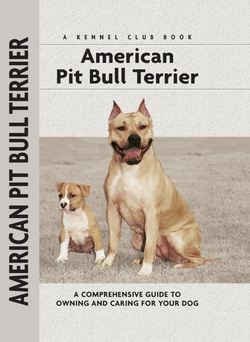Читать книгу American Pit Bull Terrier - F. Favorito - Страница 20
На сайте Литреса книга снята с продажи.
VARIATIONS IN THE BREED
ОглавлениеEarlier, we began to discuss the first divergence in type between the Pit Bull in its working form, as represented by dogs registered with the United Kennel Club and the American Dog Breeders Association, and the breed in its show form, as represented by dogs registered as American Staffordshire Terriers with the American Kennel Club. This divergence in type is common among breeds that are registered by show organizations but that remain in use in the field elsewhere, such as sporting breeds like the Labrador Retriever and English Setter. Rarely are successful show dogs also successful field or “working” dogs, especially in the US, where working ability does not affect a dog’s earning a championship. In the UK, on the other hand, the working and gundog breeds, for example, must qualify in the field before they can be considered full champions.
Although the pet Pit Bull is not used for working, his working instinct makes him a naturally active dog.
In the case of the Pit Bull, the situation has become even more complicated in recent years. Today we see at least three forms of the Pit Bull breed; these three forms can be labeled as the working (fighting) form, the show form and the “backyard-bred” form.
There is a large divergence in type among the Pit Bull breed—those that make the best working dogs would often not be successful in the show ring.
Working-form Pit Bulls, also referred to as the game-bred type, tend to be smaller, finer boned, more terrier-type dogs. Temperamentally, these dogs tend to be aggressive toward other dogs, but not toward people. In fact, years ago, the game-bred Pit Bull had the reputation of being one of the most useless of breeds for protection work because they were so reluctant to display aggression toward people.
Show-form Pit Bulls tend to be larger, more refined, bigger boned dogs with greater, more expansive chests and larger heads. Temperamentally, these dogs tend to be less dog-aggressive and not very aggressive toward people.
The “backyard-bred” dog tends to be larger than the working dog. It is not a refined-looking animal. It is not bred to last in long sustained dog matches and it is not bred to win any shows. It is generally bred to be attractive to those seeking a very macho-looking dog. Temperamentally, these dogs tend to be more aggressive toward people and often more outwardly aggressive toward other animals as well. After all, those who want a macho-looking dog are generally also in the market for a dog that will threaten others. Those who see a market in selling Pit Bulls to these people tend to selectively breed for this quality.
Acquire your pet American Pit Bull from stock that has been bred for temperament rather than fighting ability. Investigate the background of the parents and the breeder.
In selecting a Pit Bull for your own home, it is perhaps more important than with any other breed to do your homework carefully. The game-bred dog might not be the poor choice for a pet that you thought it to be. The show dog is often a fine pet. But the backyard-bred dog is what has given rise to the “Pit Bull problems” and negative reputation we have seen in recent years.
Some lines of Pit Bull produce dogs that are noticeably stockier and larger than dogs of other lines.
According to the standard, it is not important whether the dog’s ears are cropped or uncropped. Uncropped ears give the Pit Bull a softer look.
